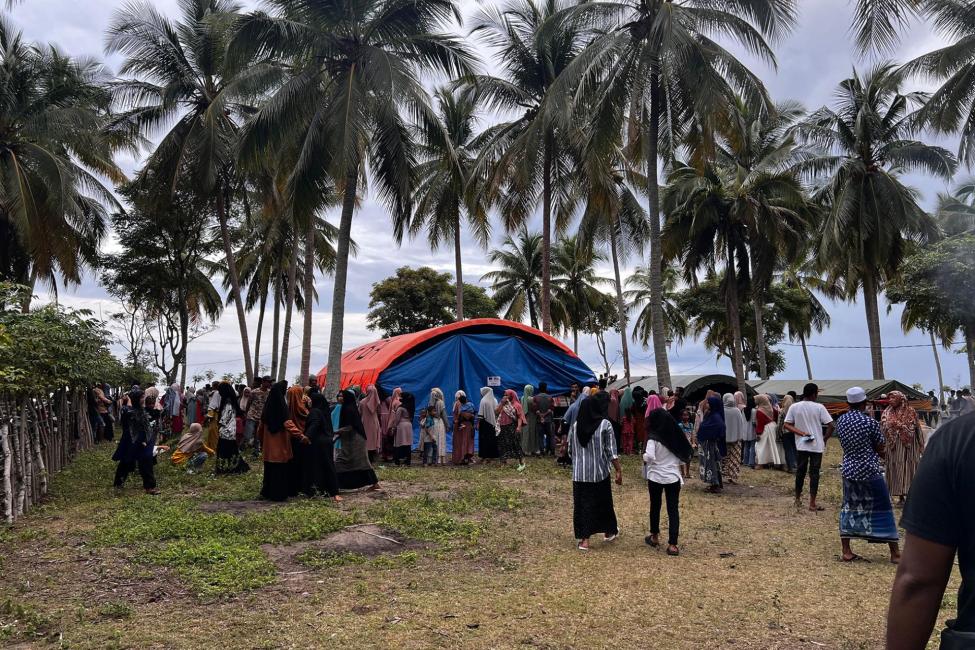-
Who we are
WHO WE AREThe International Organization for Migration (IOM) is part of the United Nations System as the leading inter-governmental organization promoting since 1951 humane and orderly migration for the benefit of all, with 175 member states and a presence in over 100 countries. IOM joined the United Nations system in September 2016.
About
About
IOM Global
IOM Global
-
Our Work
Our WorkAs the leading inter-governmental organization promoting humane and orderly migration, IOM plays a key role to support the achievement of the 2030 Agenda through different areas of intervention that connect both humanitarian assistance and sustainable development.
Cross-cutting (Global)
Cross-cutting (Global)
- Data and Resources
- Take Action
- 2030 Agenda
People on the Move in a Changing Climate: Linking Policy, Evidence and Action
Geneva – Climate change is reshaping migration patterns in every part of the world. At the 27th UN Climate Change Conference of the Parties (COP27) in Egypt this week, the International Organization for Migration (IOM) is calling for urgent action on human mobility in contexts of climate change, environmental degradation and disasters.
It is time to put into practice the dense web of agreements made in the context of climate negotiations, disaster risk reduction, migration governance and other relevant processes. These agreements must urgently be matched with action on the ground in national and local contexts.
To support States and the wider international community in this implementation stage, IOM has launched its new flagship report. According to the IDMC's Global Report on Internal Displacement 2022, disasters linked to natural hazards led to 23.7 million internal displacements.
"This report sets out a way forward to provide people with the right to choose and define mobility in a changing climate,” says IOM Director General António Vitorino.
“There is no time to lose. We must accelerate implementation of these solutions at the local level with communities."
The report, People on the Move in a Changing Climate – Linking Policy, Evidence and Action, provides communities, partners, governments and other UN agencies with guidelines to scale up the implementation of adaptative action.
The three recommendations include:
- Providing Solutions for People to Stay: Averting and minimizing displacement though disaster risk reduction and in situ adaptation;
- Providing Solutions for People on the Move: Minimizing and better addressing losses and damages, including displacement through anticipatory action; and
- Providing Solutions for People to Move: Enabling safe and regular migration
The same objectives have already been set in the IOM Institutional Strategy on Migration, Environment and Climate Change 2021–2030.
The new report also highlights practical solutions implemented by IOM and global partners to inspire policy makers to identify and replicate good practices.
For instance, community engagement in Burundi has reduced risks for settlements and housing linked to natural hazards, in addition to population movements. In Tajikistan, providing training on climate change adaptation and financial literacy and management to women who have chosen to stay has helped them with channeling their remittances into climate change adaptation and resilience-building.
IOM remains fully committed to stand together with the international community and take urgent action to design and implement sustainable solutions to assist and protect those who are most affected by the adverse impacts of climate change, environmental degradation and disasters, including migrants and internally displaced persons (IDPs).
Through its Migration, Environment and Climate Change Division, IOM oversees, supports, and coordinates the development of policy guidance for activities with a migration, environment, and climate change dimension.
***
For more information, please contact:
Migration, Environment, Climate Change and Risk Reduction Division, email: mecrHQ@iom.int

